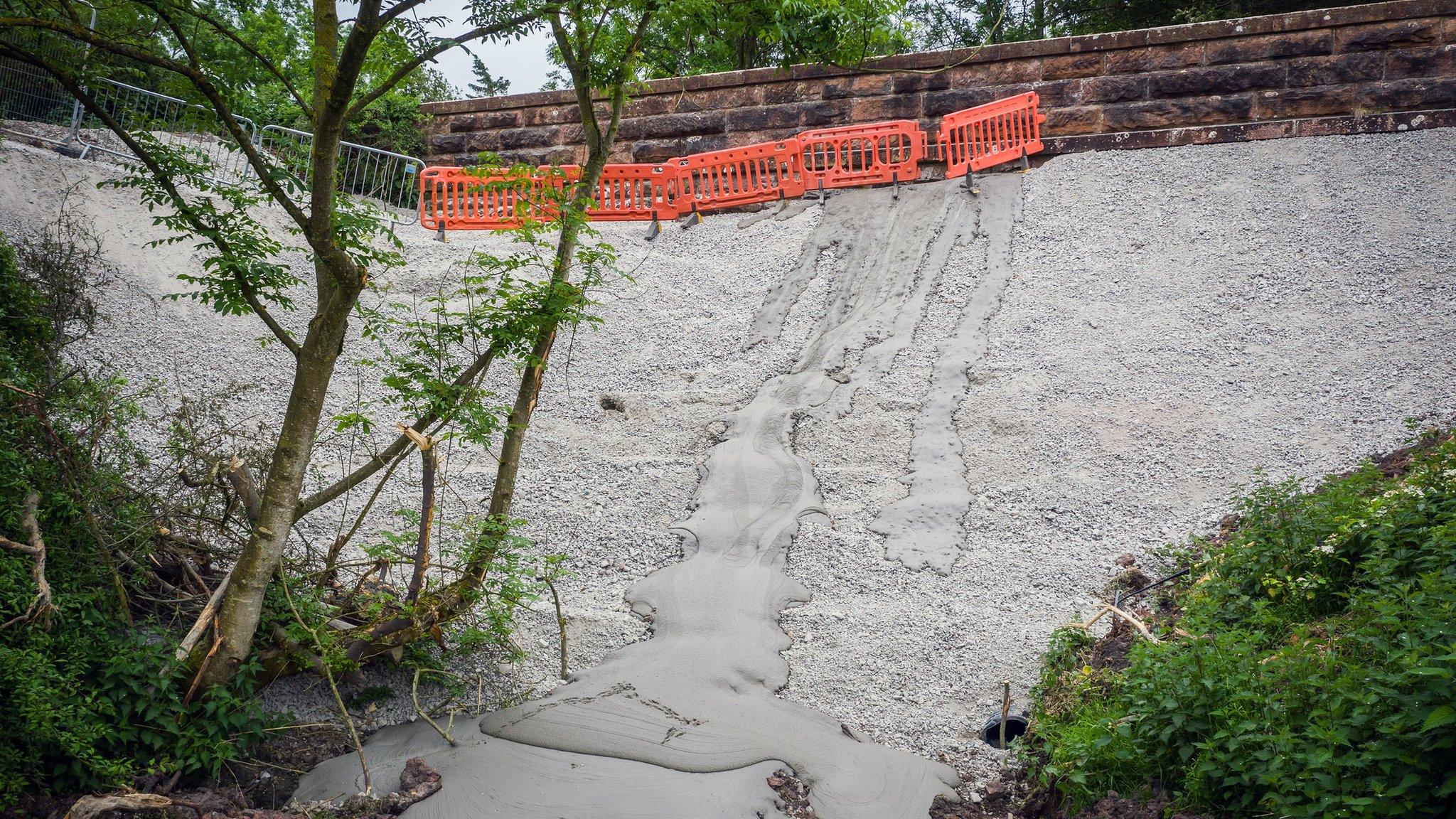Great Musgrave Bridge: Enthusiasts criticise concrete donation refusal
- Published
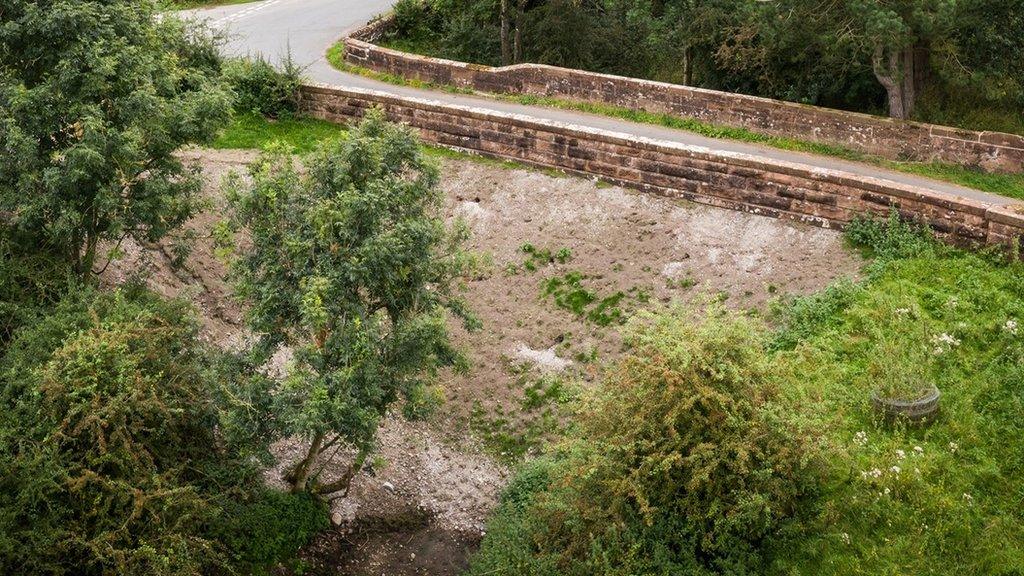
The concrete has been partly covered by greenery
A transport body criticised for pouring hundreds of tonnes of concrete under a Victorian bridge has refused a request to give it to a heritage railway group.
National Highways has been ordered to remove the infill under Great Musgrave Bridge in Cumbria by October.
Volunteer-run preservation group Stainmore Railway said the agency had "missed an opportunity to win back some goodwill" with its decision.
National Highways said a neighbouring farm was going to reuse the material.
Head of the Historical Railways Estate programme, Hélène Rossiter, said the agreement had already been made when the railway company made its request.
"We wanted to make best use of the material and also minimise the cost and environmental impact of moving it longer distances," she said.
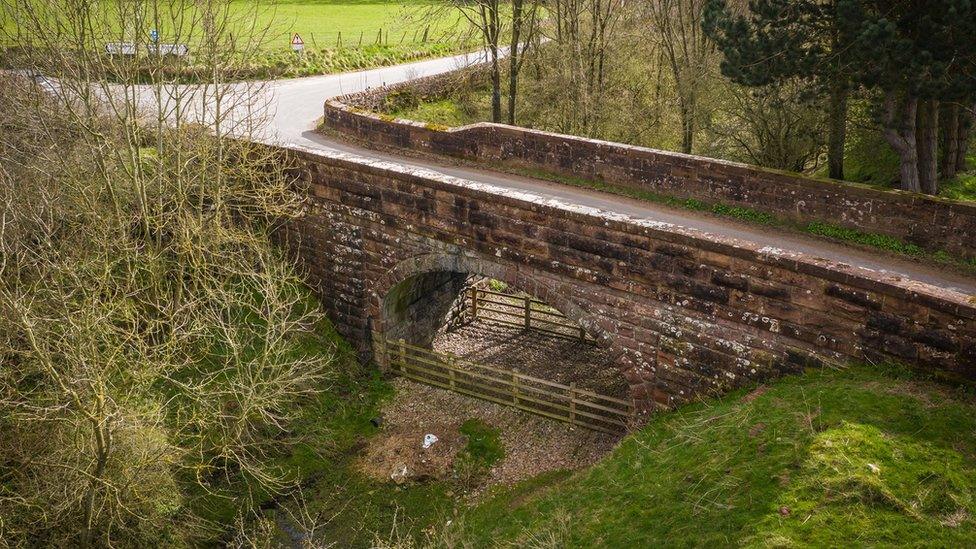
National Highways said the bridge was struggling to bear the weight of lorries but critics disagreed
The bridge, built in 1862, was infilled in July 2021 after National Highways deemed it could collapse if used by heavy vehicles.
Hundreds of people lodged objections, while critics described the concrete infill as "cultural vandalism" and disputed the claim that the bridge was unsafe.
Eden District Council said the concrete needed retrospective planning permission to remain which was refused in October 2022.
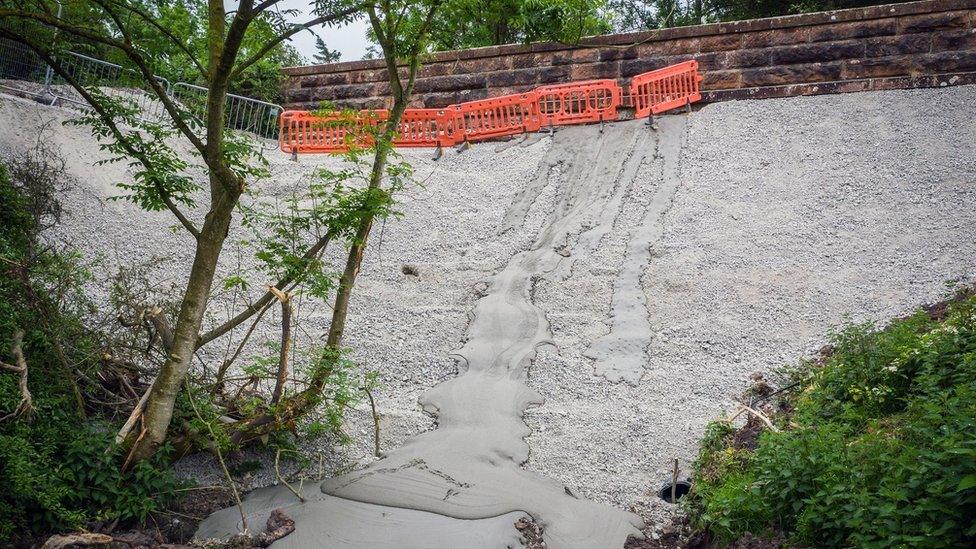
First site of the infill prompted accusations of "cultural vandalism"
The railway preservation group wants to provide a car park at its base ahead of a local event and needs about 200 tonnes of stone.
Project manager Mike Thompson said: "Buying it would be a significant expense for us, so we thought National Highways would be keen to help given the trouble and offence it caused.
"The stone being excavated from around the structure would be ideal for the car park."
But the group said it was told the material had "already been found a home" as part of negotiations to provide "best value for the taxpayer".
Mr Thompson said this was "a bit rich given the amount of money they've wasted on this unnecessary infill scheme".
Graeme Bickerdike, from the Historical Railways Estate group, which objected to the use of the concrete, said donating some of it for the car park "would have been a positive first step towards making amends".

Follow BBC North East & Cumbria on Twitter, external, Facebook, external and Instagram, external. Send your story ideas to northeastandcumbria@bbc.co.uk, external.
Related topics
- Published6 October 2022
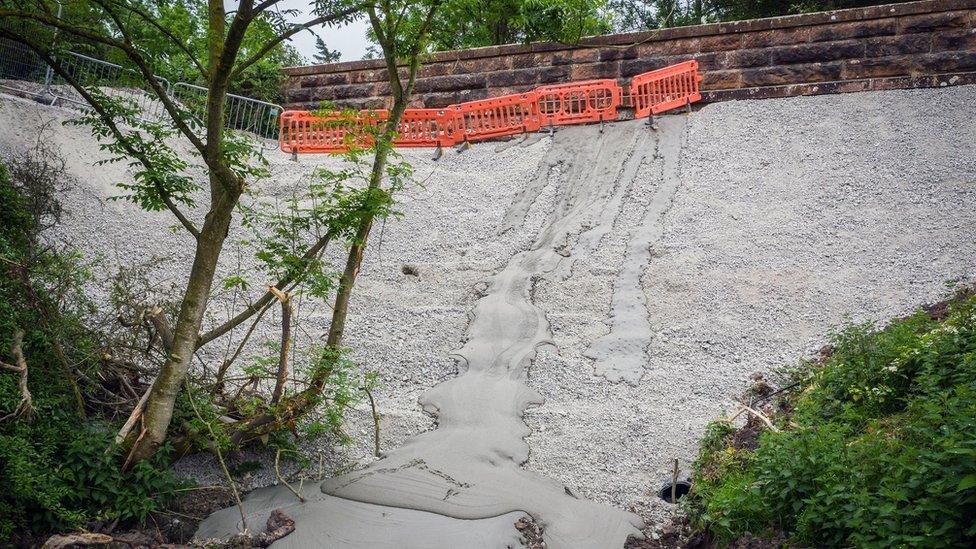
- Published16 June 2022

- Published15 May 2022
